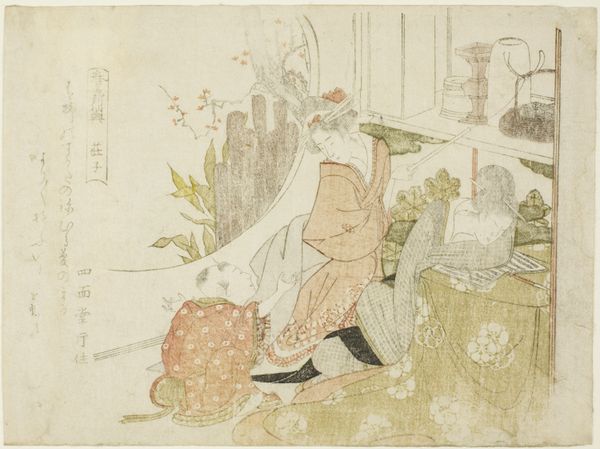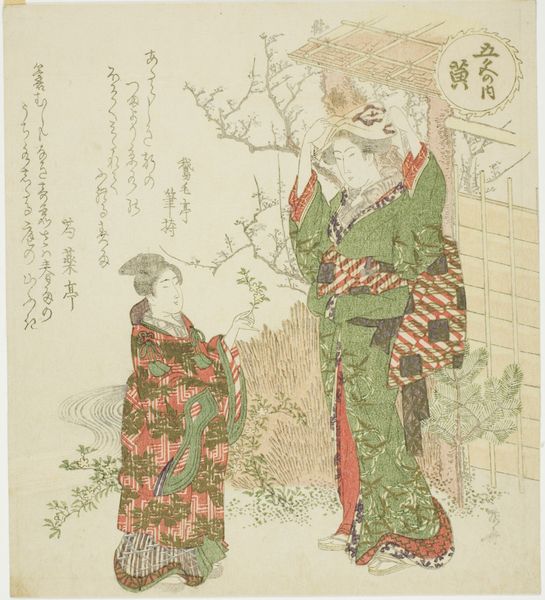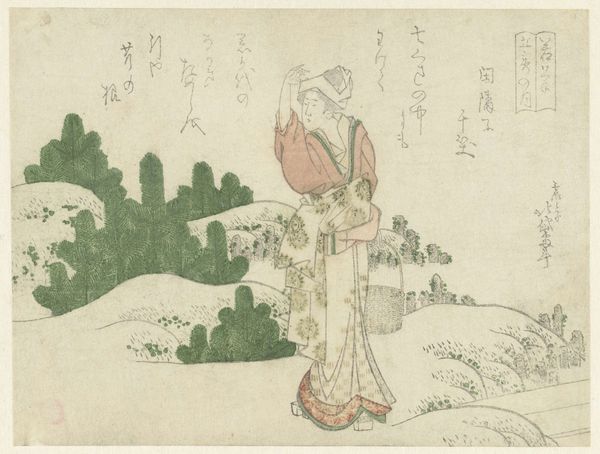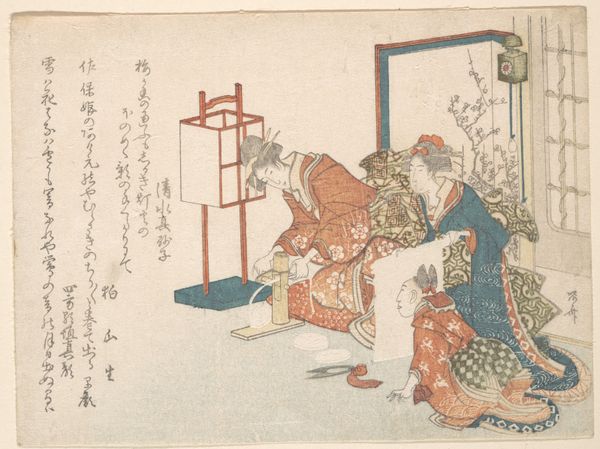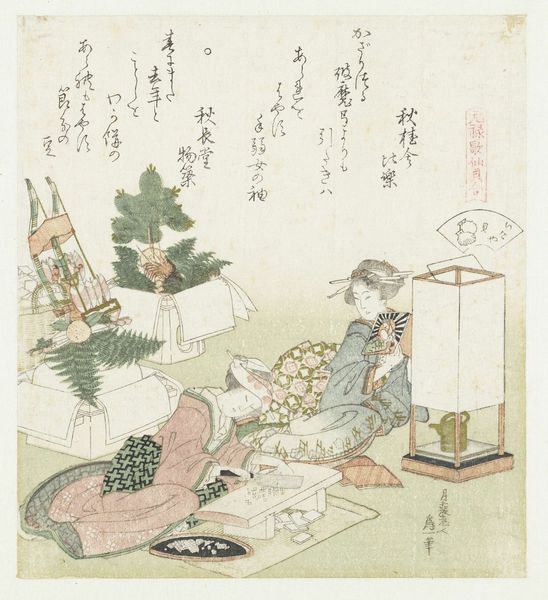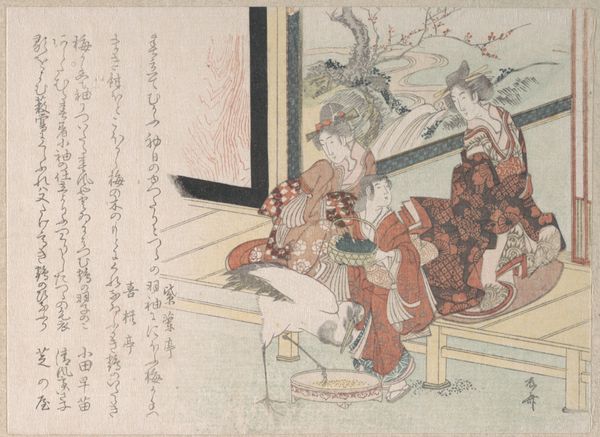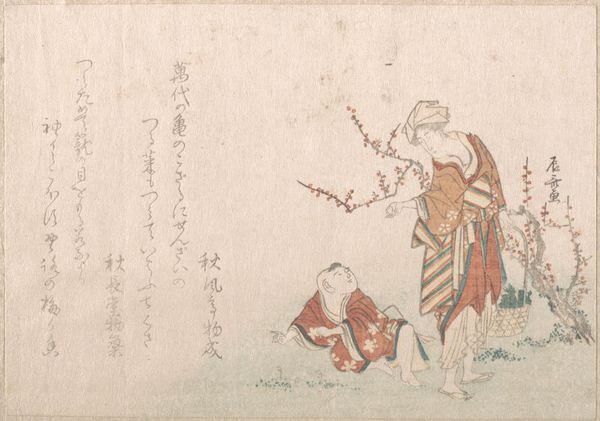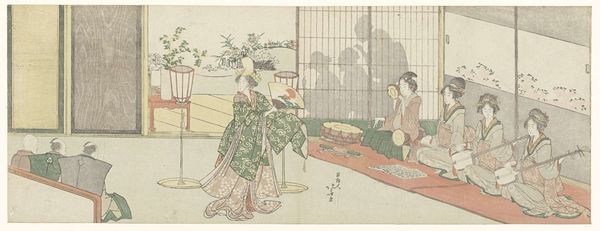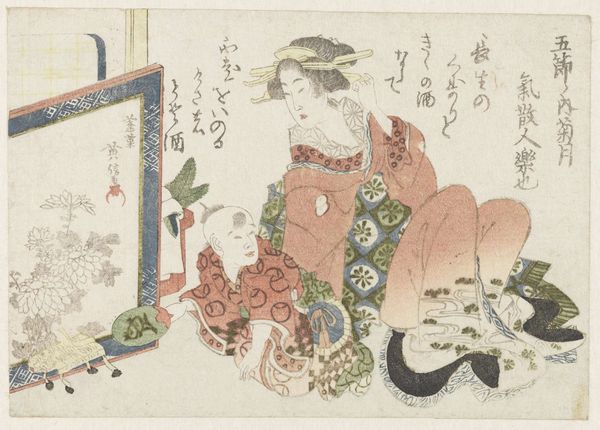
print, woodblock-print
# print
#
asian-art
#
ukiyo-e
#
figuration
#
woodblock-print
#
genre-painting
Dimensions: height 132 mm, width 175 mm
Copyright: Rijks Museum: Open Domain
Curator: This print, titled "A Woman and a Playing Child," was created around 1805 by Utagawa Toyohiro. It's a woodblock print, a medium characteristic of the Ukiyo-e style, now residing at the Rijksmuseum. Editor: My initial reaction is one of serene domesticity, but with a slightly melancholic air. The palette is muted, lending a subdued feeling despite the playful interaction depicted. The framing is remarkable! Curator: It’s a fine example of genre painting capturing daily life from this period. Toyohiro was a pupil of Utagawa Toyokuni and, while he never quite reached his teacher's fame, works like this demonstrate a strong understanding of composition. We can appreciate here the influence of the Ukiyo-e prints depicting actors and beautiful women, yet he subtly infuses the scene with his personal vision. Editor: I'm particularly drawn to the imagery surrounding the figures: the flowering tree positioned between mother and child and that interior garden rendered on the screen, hinting at an idyllic and contained world. Could the barrier represented by the plum tree indicate the beginning of a difficult period? Are those blooms also harbingers of longevity for this household? Curator: That’s a fascinating interpretation! Ukiyo-e prints like this often circulated widely, informing perceptions of Edo period life. One could speculate whether these idealized images supported a particular vision of social harmony, obscuring perhaps, the lives of the working class, even as they were increasingly targeted as consumers by print publishers. These themes resonated strongly in the era. Editor: Yes, and note how the seated woman seems to be glancing, perhaps protectively, at her child, the garden, all of their contained world. I see in that gaze the artist's way of focusing the maternal aspect: nurturing, love, even an apprehensive anxiety of care. Curator: Thinking about how these prints functioned within the era adds another layer. Disseminated as commercial objects, yet filled with such symbolically rich, intimate glimpses into lives, even staged as they may be. Editor: I think the genius is really the way Toyohiro encapsulates layers of meaning. On its surface, it's simply a genre scene. But delving deeper into the symbology unveils broader emotional, psychological, maybe even social insights regarding motherhood. Curator: A rewarding duality indeed – a scene both simple and profoundly rich, offering us a glimpse of Edo Japan, mediated and idealized, of course, but no less evocative.
Comments
No comments
Be the first to comment and join the conversation on the ultimate creative platform.
